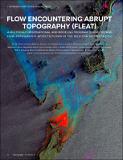FLEAT: A Multiscale Observational and Modeling Program to Understand How Topography Affects Flows in the Western North Pacific
Author(s)
Johnston, Shaun; Schönau, Martha; Paluszkiewicz, Terri; MacKinnon, Jennifer; Arbic, Brian; Colin, Patrick; Alford, Matthew; Andres, Magdalena; Centurioni, Luca; Graber, Hans; Helfrich, Karl; Hormann, Verena; Lermusiaux, Pierre; Musgrave, Ruth; Powell, Brian; Qiu, Bo; Rudnick, Daniel; Simmons, Harper; St. Laurent, Louis; Terrill, Eric; Trossman, David; Voet, Gunner; Wijesekera, Hemantha; Zeiden, Kristin; ... Show more Show less
DownloadPublished version (9.762Mb)
Publisher with Creative Commons License
Publisher with Creative Commons License
Creative Commons Attribution
Terms of use
Metadata
Show full item recordAbstract
Using a combination of models and observations, the US Office of Naval Research Flow Encountering Abrupt Topography (FLEAT) initiative examines how island chains and submerged ridges affect open ocean current systems, from the hundreds of kilometer scale of large current features to the millimeter scale of turbulence. FLEAT focuses on the western Pacific, mainly on equatorial currents that encounter steep topography near the island nation of Palau. Wake eddies and lee waves as small as 1 km were observed to form as these currents flowed around or over the steep topography. The direction and vertical structure of the incident flow varied over tidal, inertial, seasonal, and interannual timescales, with implications for downstream flow. Models incorporated tides and had grids with resolutions of hundreds of meters to enable predictions of flow transformations as waters encountered and passed around Palau’s islands. In addition to making scientific advances, FLEAT had a positive impact on the local Palauan community by bringing new technology to explore local waters, expanding the country’s scientific infrastructure, maintaining collaborations with Palauan partners, and conducting outreach activities aimed at elementary and high school students, US embassy personnel, and Palauan government officials.
Date issued
2019-12Department
Massachusetts Institute of Technology. Department of Mechanical EngineeringJournal
Oceanography
Publisher
The Oceanography Society
Citation
Johnston, T. M. Shaun et al. "Flow Encountering Abrupt Topography (FLEAT): A multiscale observational and modeling program to understand how topography affects flows in the western North Pacific." Oceanography 32, 4 (December 2019): 10–21 © 2019 Oceanography Society
Version: Final published version
ISSN
1042-8275